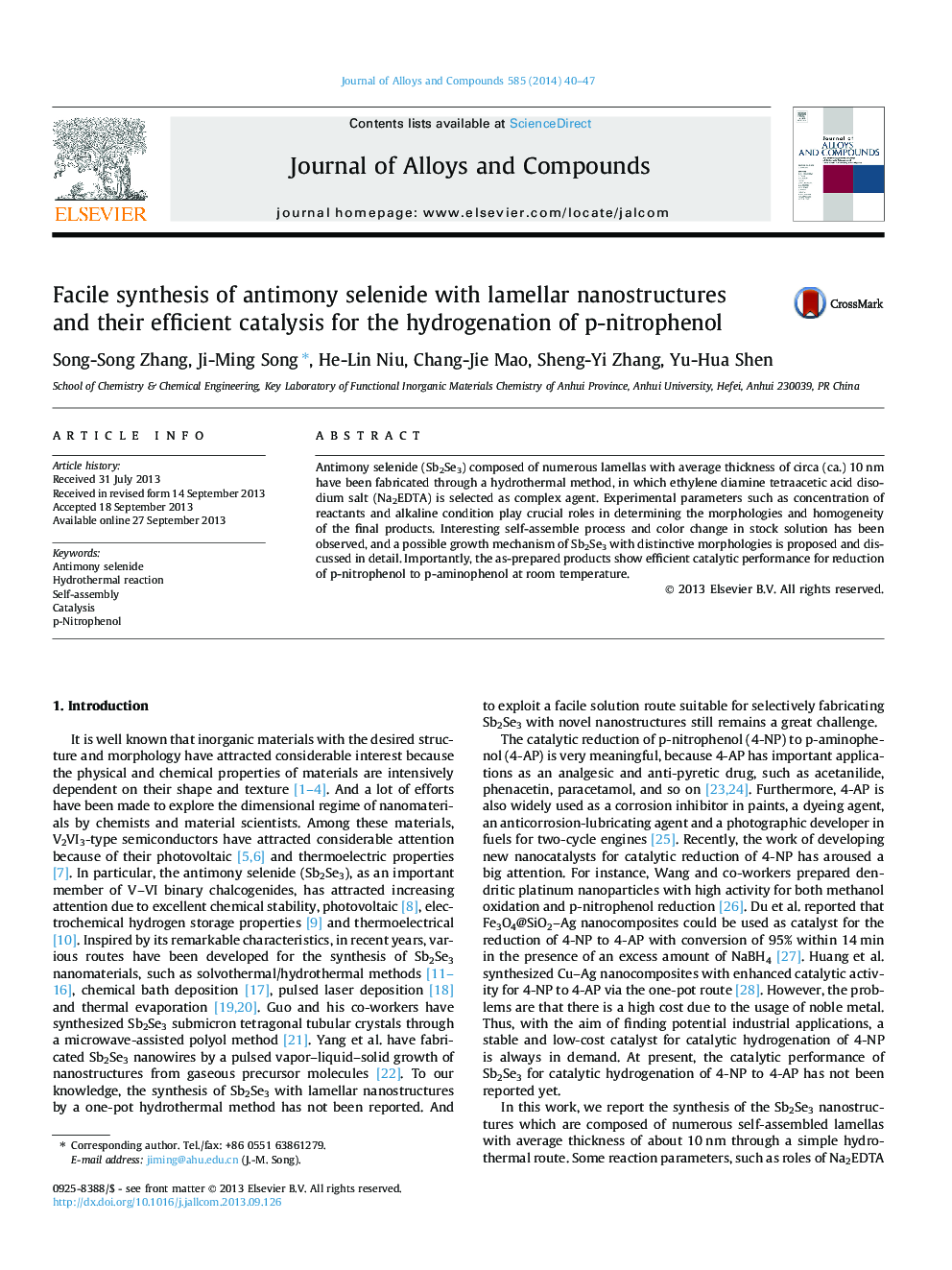| Article ID | Journal | Published Year | Pages | File Type |
|---|---|---|---|---|
| 1612943 | Journal of Alloys and Compounds | 2014 | 8 Pages |
•Antimony selenide (Sb2Se3) with novel nanostructures have fast been synthesized.•A self-assemble process has been explained the formation mechanism of Sb2Se3.•The as-synthesized Sb2Se3 have high efficient performance for reduction of p-nitrophenol.
Antimony selenide (Sb2Se3) composed of numerous lamellas with average thickness of circa (ca.) 10 nm have been fabricated through a hydrothermal method, in which ethylene diamine tetraacetic acid disodium salt (Na2EDTA) is selected as complex agent. Experimental parameters such as concentration of reactants and alkaline condition play crucial roles in determining the morphologies and homogeneity of the final products. Interesting self-assemble process and color change in stock solution has been observed, and a possible growth mechanism of Sb2Se3 with distinctive morphologies is proposed and discussed in detail. Importantly, the as-prepared products show efficient catalytic performance for reduction of p-nitrophenol to p-aminophenol at room temperature.
Graphical abstractAntimony selenide (Sb2Se3) nanostructures composed of numerous lamellas with average thickness of ca.10 nm have been fast and successfully fabricated through a facile hydrothermal method using ethylene diamine tetraacetic acid disodium salt (Na2EDTA) as a complex agent. The as-synthesized Sb2Se3 (excluding precious metals) have high efficient performance for reduction of p-nitrophenol to p-aminophenol at room temperature.Figure optionsDownload full-size imageDownload as PowerPoint slide
